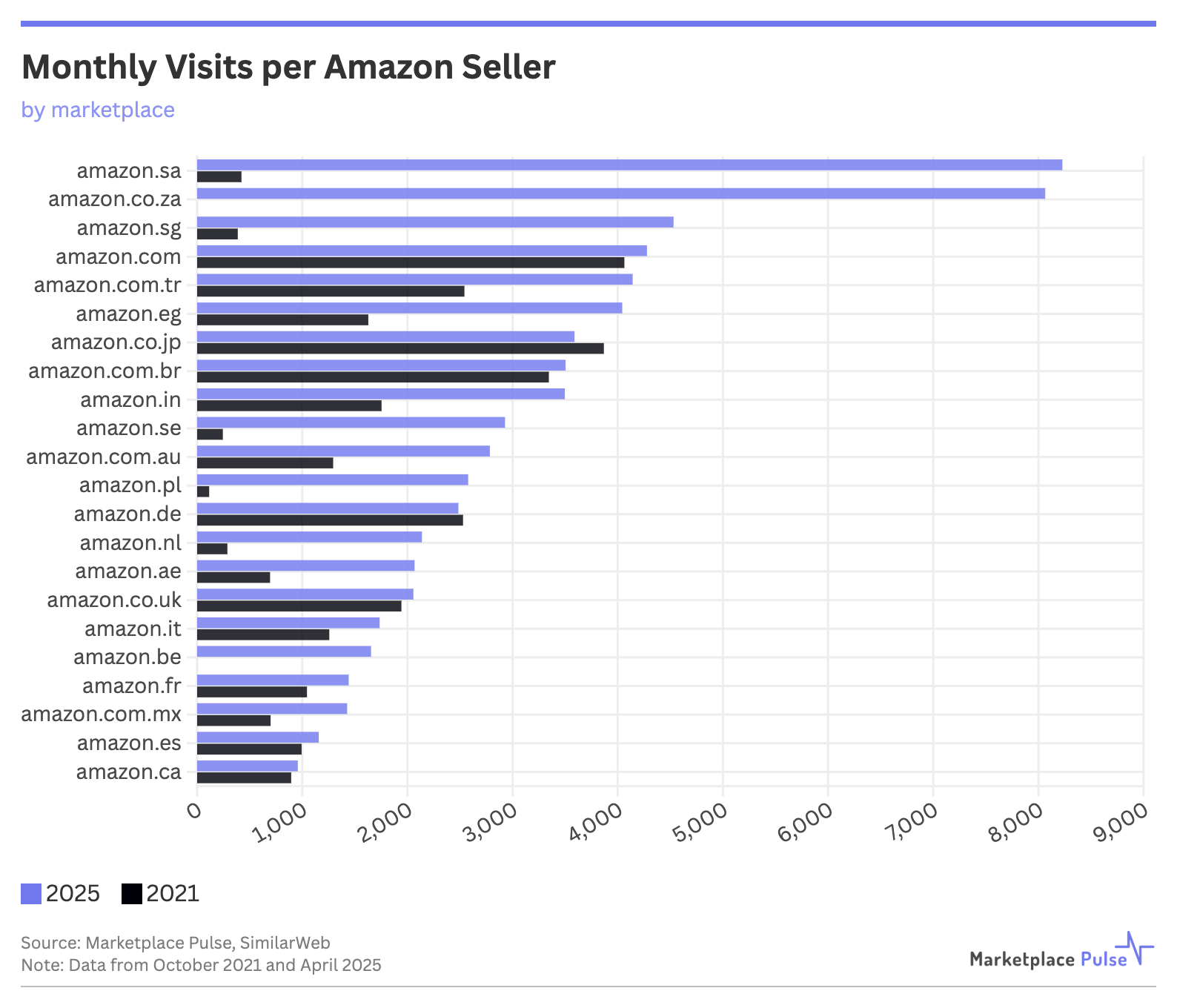This Week in M&A Issue #187
Hello, legends!😎
Today’s trend of the week is “tissue paper”.
The humble tissue is having its moment, and it’s nothing to sneeze at.
The U.S. tissue paper market is on a roll and is projected to reach $20.81 billion by 2030, driven by a surge in hygiene awareness. In fact, the U.S. is one of the leading countries globally in terms of tissue paper consumption per capita, and demand keeps rising.
For online business owners, this opens up exciting opportunities. Shoppers are looking for recycled and sustainable tissue paper, so offering green options, especially ones with certifications like FSC, can really help your brand stand out.
Plus, custom printing is now more accessible for smaller sellers, so you can turn plain paper into a brand statement. If you stay nimble and eco-focused, there’s definitely room to clean up in this market.
Today we have for you:
- The rise of ‘made in USA’ products and the risks behind the label
- Selling on Amazon is less competitive than it was in 2021
And:
- SBA launches new U.S. supplier directory
- Build or buy? The side hustle dilemma
- Google AI Mode is changing search, and not everyone wins
Alright, let’s dive in.
ecommerce
Stars, Stripes, and Strict Rules: FTC Cracks Down on “Made in USA”
The latest round of tariffs on imports has sparked a sharp rise in demand for “Made in USA” products, with Amazon searches for the phrase jumping from 26,000 to 126,000 in just 30 days. Google searches for “made in USA” have also almost doubled since the start of the year.
Brands are quickly responding, adding the label to over 151,000 Amazon listings and generating more than $5 billion in sales.
But while this trend taps into consumer interest in quality, patriotism, and tariff-free goods, it also comes with legal risks. The Federal Trade Commission (FTC) strictly enforces what qualifies as “Made in USA,” requiring that all or nearly all parts, processing, and assembly be done domestically.
Some businesses are misusing the label, intentionally or not, and paying the price. In recent years, the FTC has issued over $15 million in penalties, including a $3.17 million fine against Williams-Sonoma for repeated violations. Even subtle word choices like “built,” “manufactured,” or “made” are treated the same under the law, making it easy for brands to get tripped up.
To stay compliant, many are shifting to qualified claims such as “Made in USA with globally sourced materials”, “Made in America with imported and domestic materials”, or even simply “Assembled in USA”.
While this marketing surge may be fueled by algorithm strategy more than patriotism, it’s important for businesses to understand the FTC’s standards. Brands chasing short-term wins with false claims risk steep penalties, lawsuits, and lasting reputational harm.
That said, those that can honestly promote American manufacturing have a chance to stand out in a market where 40% of shoppers say they’re willing to pay more for U.S.-made goods.
Events
We’re Buying Drinks in London – See You There!
SaaS founders, listen up.
If you’ve ever thought about selling your agency or SaaS for 7 figures, then this is the room you need to be in.
We’re teaming up with GoHighLevel for a no-fluff, all-value event:
🗓️ – SaaSPreneur London
📍 – June 11th
🍻 – Empire Flippers is buying the drinks
Expect 100s of agency owners, SaaS founders & buyers. No boring panels. No fluff. Just sharp entrepreneurs, operators, and buyers, sharing insights, opportunities, and maybe your next big move.
Our CEO, Andy Allaway, will be there too, ready to talk exits, acquisitions, and how to build your business toward a 7-figure exit.
Tickets are moving fast, so get yours now → https://saaspreneur.gohighlevel.com/live-empire-flippers
Email us once you’ve got your ticket – we’ve got limited 1-on-1 spots to talk strategy with Andy. First come, first serve.
Amazon
Fewer Sellers and More Opportunity on Amazon’s Marketplace
Amazon sellers today may face less competition than they did four years ago.
According to new research by Marketplace Pulse, although Amazon adds nearly a million new sellers every year, the number of active sellers on the platform has dropped from over 2.4 million in 2021 to under 1.9 million in 2025.
Amazon’s overall web traffic has remained steady, but with fewer active sellers, each one now receives more visibility. On average, sellers are seeing 31% more monthly traffic than in 2021, rising from 2,162 visits to 2,837 per seller in 2025. Combined with Amazon’s revenue growth from $470 billion in 2021 to $638 billion in 2024, this means sellers are now competing for a larger market with fewer peers.
Third-party sellers are playing a bigger role than ever. In Q4 of 2024, they were responsible for 62% of all units sold, up from 56% in late 2021. This suggests that successful sellers are gaining more ground, even as selling on Amazon becomes more demanding.
Long-time sellers still have a major advantage. Over 60% of the top 10,000 sellers on Amazon.com started before 2019, showing that experience and early positioning continue to drive success. Although the U.S. marketplace remains the largest in terms of traffic, with 2.45 billion monthly visits, smaller regions like Saudi Arabia and South Africa now offer higher traffic per seller, though they generate less total revenue.
Despite increased fees (which now exceed 50% of revenue for many sellers), rising competition from Chinese manufacturers selling directly to consumers, and tighter regulations, this data shows that selling on Amazon can still be highly rewarding.
The road to success on Amazon is tougher, and shortcuts that once gave sellers an edge, like offering free products for reviews, are no longer allowed. But with fewer active sellers and stronger demand for third-party products, the potential payoff is greater than it was four years ago.
ecommerce
SBA Launches New Tool to Help Small Businesses Source US Suppliers
The U.S. Small Business Administration (SBA) has launched a new online tool designed to help small businesses find American suppliers and reduce dependence on foreign supply chains.
Called the Make Onshoring Great Again Portal, the free tool gives users access to a database of over one million verified U.S.-based manufacturers, producers, and suppliers. It was officially released on May 20, 2025, and aims to help small businesses avoid costly tariffs as well as delays often linked to overseas sourcing.
While the portal itself is new, the information it provides is not. It pulls data from three existing platforms: IndustryNet, ThomasNet, and CONNEX, all of which specialize in connecting businesses with U.S. manufacturers.
Business owners can access the portal by visiting:
www.sba.gov/priorities/american-manufacturers/make-onshoring-great-again-portal.
Read All About It!
💼 5 ways to start a business with <$1,000: where every dollar should go
🛠️ ChatGPT alternatives for SEO and content teams: alternative AI tools
🎓 Best AI courses and certifications in 2025: become an AI pro
🕵️♂️ 14 best competitive intelligence tools for market research: competitor analysis
YouTube
Should You Build or Buy A Side Hustle In 2025?
Most people spend 18 months working on a side hustle that never takes off. But what if you could skip the trial-and-error phase and start making money from day one?
In our latest video, Greg breaks down whether it’s better to start a side hustle or buy one that’s already running in 2025. He covers:
- The risks, rewards, and ROI of buying vs building
- What most people get wrong about “starting small”
- How to shortcut the painful early stage and hit the ground running
If you’re serious about building extra income or replacing your 9-5, this decision could make or break your results. Don’t make your move until you’ve watched this.
Google Search
Winners and Losers in the New Era of AI Search
Google’s new AI Mode is transforming search, but not everyone is benefiting.
Since the rollout of AI Overviews, a precursor to AI Mode, The Daily Mail reported a 44% drop in clickthrough rates, while other sites have seen significant declines.
So, who are the winners and losers of Google’s AI Mode? Digiday recently broke this down.
A clear and unsurprising winner is Google. By integrating AI answers directly into search results, users get the information they need without clicking away, keeping them within Google’s ecosystem. These AI-generated responses often involve more detailed, complex queries, allowing Google to place more personalized, high-value ads. With Search generating nearly $67 billion in ad revenue last quarter, the shift is already paying off.
This benefits advertisers too. AI Mode breaks down user queries into subtopics, making ads more relevant. Advertisers can still pay per click, but now also have options to pay based on user actions or returns on ad spend, giving them more flexibility.
Some publishers, particularly those with strong subscription models and diversified traffic sources, are less impacted. They’re leaning into direct reader relationships via newsletters and memberships. Retail media networks may also gain, with AI Mode enhancing product discovery, though they too face the challenge of declining click-throughs.
The hardest hit are traditional publishers, especially news, product review, and recipe sites. AI Mode often answers user questions directly, reducing the need to click through to source websites. Worse, publishers can’t opt out of AI summaries without disappearing from Search entirely.
SEO agencies also face a major challenge as Google shifts away from keyword-based rankings to a focus on contextual relevance. Many existing SEO tactics are now outdated, forcing agencies to rethink their entire approach.
The future of search is smarter, but for those unable to adapt, it’s not looking brighter.
Subscribe to the This Week in M&A Newsletter
to Get Content like This in Your Inbox Every Friday






-min.jpg)
